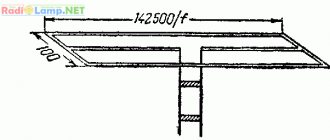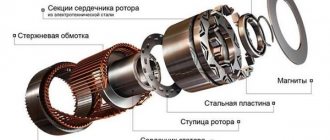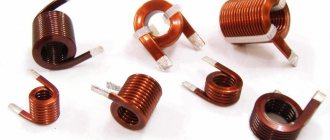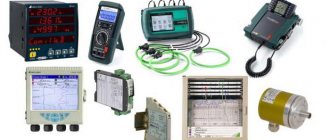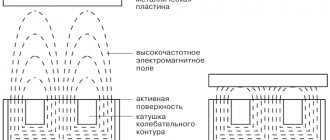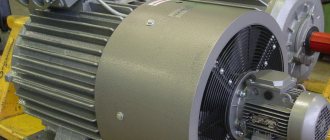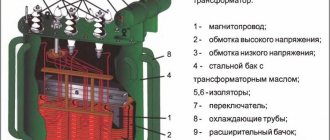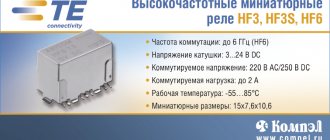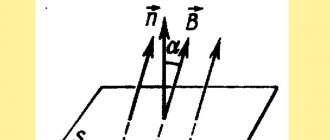Along with pieces of amber electrified by friction, permanent magnets were for ancient people the first material evidence of electromagnetic phenomena (lightning at the dawn of history was definitely attributed to the sphere of manifestation of immaterial forces). Explaining the nature of ferromagnetism has always occupied the inquisitive minds of scientists, however, even now the physical nature of the permanent magnetization of some substances, both natural and artificially created, has not yet been fully revealed, leaving a considerable field of activity for modern and future researchers.
Traditional materials for permanent magnets
They have been actively used in industry since 1940 with the advent of alnico alloy (AlNiCo). Previously, permanent magnets made of various types of steel were used only in compasses and magnetos. Alnico made it possible to replace electromagnets with them and use them in devices such as motors, generators and loudspeakers.
This penetration into our daily lives received a new impetus with the creation of ferrite magnets, and since then permanent magnets have become commonplace.
The revolution in magnetic materials began around 1970, with the creation of the samarium-cobalt family of hard magnetic materials with previously unheard-of magnetic energy densities. Then a new generation of rare earth magnets was discovered, based on neodymium, iron and boron, with a much higher magnetic energy density than samarium cobalt (SmCo) and at an expectedly low cost. These two families of rare earth magnets have such high energy densities that they can not only replace electromagnets, but be used in areas that are inaccessible to them. Examples include the tiny permanent magnet stepper motor in wristwatches and the sound transducers in Walkman-type headphones.
The gradual improvement in the magnetic properties of materials is shown in the diagram below.
From the history of magnetism
In the VI century. BC. In ancient China, a mineral (rock) was discovered that attracted iron objects. The Chinese gave it the name “chu-shi”, which translates as “loving stone.” “Loving” - in the sense of attracting.
The word “magnet” was introduced into use by the ancient Greeks in the 5th century. BC. There is a legend that the first samples of these unusual “black stones” were found near the city of Magnesu, where deposits of magnetite were discovered. Magnet is translated as “stone from Magnesia”.
Magnetite is a black iron ore mineral, iron oxide Fe3O4, which has natural magnetic properties.
Neodymium permanent magnets
They represent the latest and most significant development in this field over the past decades. Their discovery was first announced almost simultaneously at the end of 1983 by metal specialists from Sumitomo and General Motors. They are based on the intermetallic compound NdFeB: an alloy of neodymium, iron and boron. Of these, neodymium is a rare earth element extracted from the mineral monazite.
The enormous interest that these permanent magnets have generated arises because for the first time a new magnetic material has been produced that is not only stronger than the previous generation, but is more economical. It consists mainly of iron, which is much cheaper than cobalt, and neodymium, which is one of the most common rare earth materials and has more reserves on Earth than lead. The major rare earth minerals monazite and bastanesite contain five to ten times more neodymium than samarium.
Types of magnets
A permanent magnet is an object created from a magnetized substance that forms its own magnetic field. An example is an ordinary refrigerator magnet. There are different types of magnets. Materials that can be magnetized or easily attracted are called ferromagnetic.
There is also an electromagnet that becomes magnetized only if an electric current is passed through it.
This magnet resembles a horseshoe and is made of alnico (iron alloy). The shape allows it to press two magnetic poles to form a strong magnetic field capable of holding heavy iron debris
Physical mechanism of permanent magnetization
To explain the functioning of a permanent magnet, we must look inside it down to the atomic scale. Each atom has a set of spins of its electrons, which together form its magnetic moment. For our purposes, we can consider each atom as a small bar magnet. When a permanent magnet is demagnetized (either by heating it to a high temperature or by an external magnetic field), each atomic moment is oriented randomly (see figure below) and no regularity is observed.
When it is magnetized in a strong magnetic field, all atomic moments are oriented in the direction of the field and, as it were, interlocked with each other (see figure below). This coupling allows the permanent magnet field to be maintained when the external field is removed, and also resists demagnetization when its direction is changed. A measure of the cohesive force of atomic moments is the magnitude of the coercive force of the magnet. More on this later.
In a more in-depth presentation of the magnetization mechanism, one does not operate with the concepts of atomic moments, but uses ideas about miniature (of the order of 0.001 cm) regions inside the magnet, which initially have permanent magnetization, but are randomly oriented in the absence of an external field, so that a strict reader, if desired, can attribute the above physical The mechanism is not related to the magnet as a whole. but to its separate domain.
How magnets are made in different ways
Pressed magnets are magnets made by mixing a special type of NdFeB powder with polymer binding materials. This mass is then pressed into a mold and heated.
Magnetic products obtained in this way can be of complex shapes and usually do not require additional processing. They have lower product energy than sintered magnets, up to 10 MGse.
Isotropic NdFeB magnetoplasts can be magnetized in any direction.
By using special solenoids, it is possible to obtain multi-pole magnets or magnets with a special shape of the magnetic field.
Of course, such complex solenoids can be very expensive depending on the complexity of the design and the required performance.
Cast magnets - in this method of producing magnets, NdFeB powder is mixed with a polymer material and extruded into a mold. The resulting magnetic products have product energies of up to 5 MGse, but can be made into intricate shapes.
Sintered neomagnets - fine NdFeB powder is pressed into a mold, then sintered and processed to the desired size (ground).
The production of neodymium magnets is a complex high-tech process that requires compliance with the composition and impurity content. All operations, except for grinding to size, are carried out without oxygen in a vacuum or an atmosphere of inert gases. The direction of magnetization is determined by the texture of the magnetic field during pressing.
Induction and magnetization
The atomic moments are summed up and form the magnetic moment of the entire permanent magnet, and its magnetization M shows the magnitude of this moment per unit volume. Magnetic induction B shows that a permanent magnet is the result of an external magnetic force (field strength) H applied during primary magnetization, as well as an internal magnetization M due to the orientation of atomic (or domain) moments. Its value in the general case is given by the formula:
B = µ0 (H + M),
where µ0 is a constant.
In a permanent ring and homogeneous magnet, the field strength H inside it (in the absence of an external field) is equal to zero, since, according to the law of total current, the integral of it along any circle inside such a ring core is equal to:
H∙2πR = iw=0, whence H=0.
Therefore, the magnetization in a ring magnet is:
M= B/µ0.
In an open magnet, for example, in the same ring magnet, but with an air gap of width lzaz in a core of length lser, in the absence of an external field and the same induction B inside the core and in the gap, according to the law of total current, we obtain:
Hser l ser + (1/ µ0)Blzaz = iw=0.
Since B = µ0(Hser + Mser), then, substituting its expression into the previous one, we get:
Hser(l ser + lzaz) + Mser lzaz=0,
or
Hser = ─ Mser lzaz(l ser + lzaz).
In the air gap:
Hzaz = B/µ0,
wherein B is determined by the given Mser and the found Hser.
Natural (natural) magnets.
The magnetic properties of some natural minerals were known in ancient times. Thus, written evidence from more than 2000 years ago has been found that natural permanent magnets were used as compasses in ancient China. The attraction and repulsion of magnets and their magnetization of iron filings are mentioned in the works of ancient Greek and Roman scientists (for example, the poem “On the Nature of Things” by Lucretius Cara).
Natural magnets are pieces of magnetic iron ore (magnetite), which consists of FeO (31%) and Fe2O (69%). By bringing such a piece of mineral to small iron objects - nails, sawdust, a thin blade, etc., it will attract them.
Magnetization curve
Starting from the unmagnetized state, when H increases from zero, due to the orientation of all atomic moments in the direction of the external field, M and B quickly increase, changing along section “a” of the main magnetization curve (see figure below).
When all atomic moments are equalized, M comes to its saturation value, and a further increase in B occurs solely due to the applied field (section b of the main curve in the figure below). When the external field decreases to zero, the induction B decreases not along the original path, but along section “c” due to the coupling of atomic moments, tending to maintain them in the same direction. The magnetization curve begins to describe the so-called hysteresis loop. When H (external field) approaches zero, the induction approaches a residual value determined only by atomic moments:
Br = μ0 (0 + Mg).
After the direction of H changes, H and M act in opposite directions and B decreases (part of the curve “d” in the figure). The value of the field at which B decreases to zero is called the coercive force of the BHC magnet. When the magnitude of the applied field is large enough to break the cohesion of the atomic moments, they are oriented in the new direction of the field, and the direction of M is reversed. The field value at which this occurs is called the internal coercive force of the permanent magnet MHC. So, there are two different but related coercive forces associated with a permanent magnet.
The figure below shows the basic demagnetization curves of various materials for permanent magnets.
It shows that NdFeB magnets have the highest residual induction Br and coercive force (both total and internal, i.e., determined without taking into account the strength H, only by the magnetization M).
Natural (natural) magnets.
The magnetic properties of some natural minerals were known in ancient times. Thus, written evidence from more than 2000 years ago has been found that natural permanent magnets were used as compasses in ancient China. The attraction and repulsion of magnets and their magnetization of iron filings are mentioned in the works of ancient Greek and Roman scientists (for example, the poem “On the Nature of Things” by Lucretius Cara).
Natural magnets are pieces of magnetic iron ore (magnetite), which consists of FeO (31%) and Fe2O (69%). By bringing such a piece of mineral to small iron objects - nails, sawdust, a thin blade, etc., it will attract them.
Surface (ampere) currents
The magnetic fields of permanent magnets can be considered as the fields of some associated currents flowing along their surfaces. These currents are called Ampere currents. In the usual sense of the word, there are no currents inside permanent magnets. However, comparing the magnetic fields of permanent magnets and the fields of currents in coils, the French physicist Ampere suggested that the magnetization of a substance can be explained by the flow of microscopic currents, forming microscopic closed circuits. And indeed, the analogy between the field of a solenoid and a long cylindrical magnet is almost complete: there is a north and south pole of a permanent magnet and the same poles of the solenoid, and the patterns of force lines of their fields are also very similar (see figure below).
Permanent magnet: interaction with objects, magnetic field, demagnetization
Permanent magnets are substances that have a constant magnetic force. The ends of permanent magnets are called poles. Each magnet has two poles: north (N) and south (S). On some magnets they are marked in two colors (most often blue and red).
Permanent magnets, unlike electromagnets, do not require electricity to create their magnetic field. Permanent magnets are always composed of ferromagnetic materials whose elementary magnets, the atomic spins, are aligned parallel during the magnetization process. This can occur when molten ferromagnetic rocks cool. Such rock (magnetites) was historically found by the ancient Greeks near the city of Magnesia (a city in Asia Minor). Thus, the city of Magnesia is the historical eponym of magnetism.
Small permanent magnets are used to pick up small metal parts or to attach lightweight objects to magnetic boards. For example, some screwdrivers have magnetized tips that allow them to hold a metal screw in a pivot slot. Permanent magnets are also used where it is necessary to create an electric current in small generators using electromagnetic induction. An example of this is a bicycle dynamo.
How do magnets interact with other objects?
Even the ancient Greek scientist Thales of Miletus noticed that objects made of magnetite interact with objects containing iron.
By bringing a magnet close to objects made of various materials, you can establish that very few of them are attracted by the magnet. Cast iron, steel, iron and some alloys are well attracted by magnets; nickel and cobalt are much weaker. In general, bodies made of non-ferrous metals, such as copper, aluminum and others, are not attracted by magnets.
Permanent magnets can attract ferromagnetic substances (such as iron) or repel each other at like poles (north pole to north pole, south pole to south pole). In fact, bodies that retain magnetization for a long time are permanent magnets or simply magnets.
The north pole of a permanent magnet attracts the south pole of another permanent magnet and vice versa. Between the poles of the same name (north pole to north pole, south pole to south pole), on the contrary, repulsive magnetic forces act.
Rice. 1. Permanent magnets
However, permanent magnets can also be obtained artificially. In this process, strong ferromagnetic metals, typically alloys such as samarium-cobalt, are magnetized by a strong external magnetic field. This magnetization process exhibits the so-called hysteresis, that is, the asymmetrical behavior of the material with an increase and subsequent decrease in the external magnetic field. Hysteresis occurs because the alignment of the elementary magnets in a ferromagnet is stabilized by exchange interaction, so a material that has already been magnetized has different properties than a ferromagnet that has not yet been magnetized.
Due to hysteresis, the magnetic field is maintained in the ferromagnet even when the external magnetic field is turned off. Thus, the magnetized material becomes a permanent magnet. The remaining magnetic flux density is called remanent magnetization.
Magnetic field of permanent magnets.
Magnets interact not only with other objects, but also with each other. The space around a magnet in which magnetic forces act is called a magnetic field.
Namely, if you bring the red north pole of a bar magnet closer to the north pole of a second, rotating magnet, then the north pole of this magnet turns away from the north pole of the bar magnet - this works like a force between the two north poles of the magnets, and two identical poles repel each other.
If, on the other hand, you bring the green south pole of a bar magnet closer to the red north pole of a rotating magnet, then the north pole will turn toward the south pole of the bar magnet. There is also a force between two different poles. Two different poles attract each other.
In both cases the following applies: if you remove the bar magnet again, the swing magnet will return to its original position. The following applies: the greater the distance between the poles, the less the force effect and therefore the deflection of the magnet.
Force between magnet poles
Using iron filings you can get an idea of the type of magnetic field of permanent magnets. Figure 2 gives an idea of the magnetic field pattern of a strip magnet. Both the magnetic field lines of an electric current and the magnetic field lines of a magnet are closed lines. Outside the magnet, magnetic lines leave the north pole of the magnet and enter the south pole, closing inside the magnet, just like the magnetic lines of a coil carrying an electric current.
Peryshkin A.V. Physics 8. – M.: Bustard, 2010.
Rice.
2. Experiment with iron filings, which are located according to the magnetic field lines of a strip magnet. What happens if we try to divide one magnet into two? If we repeat the experiments with each of the pieces, we will find that there is a magnetic field around each of them. It turned out that two magnets were created from one magnet. We can never get one magnetic pole. As a result, the magnetic poles in magnets are always arranged in pairs.
Demagnetization.
A permanent magnet can be demagnetized by heat, strong mechanical vibration, or a strong external magnetic field.
While an electromagnet can be turned off by simply turning off the electric current, and the polarity can be reversed by reversing the direction of the electric current, it is not possible to "turn off" a permanent magnet. Hence the term “permanent”.
A permanent magnet remains magnetic until the alignment of the atomic spins is again disrupted by external influences (heat, strong shocks, magnetic fields). Then the magnetic forces disappear, and the material has to be magnetized again. In extreme cases, the material may even be damaged. Therefore, each permanent magnet has a maximum operating temperature. Damage may occur if this temperature is exceeded. Above the Curie temperature characteristic of a particular material, the magnet is in any case completely demagnetized.
Magnetic field strength of a permanent magnet.
The strength of a permanent magnet's magnetic field depends on the material used, as well as the precision with which the material is magnetized. Magnetization leads to high remanent magnetization only if complete alignment of all atomic spins is achieved. This requires suitable materials and technical know-how.
As described by Maxwell's equations, magnetic fields always come from moving charges. There are only magnetic fields caused by the movement of a charge, which always create a magnetic field with a north and south pole.
The magnetic field strengths of permanent magnets are explained by the microscopic movement of charges in matter. For example, electrons in atoms move at tremendous speed. Electrons have a characteristic electron spin. From the general state of electron motion, a magnetic moment arises and, consequently, the strength of the magnetic field.
Magnetic forces always act along the magnetic field. This can be represented by field lines. Field lines also indicate the direction and magnitude of magnetic forces.
Rice. 3. Magnetic field of a permanent magnet
In Figure 3, you can see that the loop of conductor carrying electric current (left) creates a magnetic field. The magnitude of this magnetic field is measured by the magnetic moment. There are many magnetic moments in a ferromagnetic material (center of the picture). If they are all aligned in parallel, a permanent magnet is created. A permanent magnet has a magnetic field identical to the magnetic field of the coil. In the presented figure, only a few magnetic field lines are schematically indicated.
Permanent magnets can be manufactured in a wide variety of shapes. For example, a horseshoe magnet is shown in Figure 3 on the right. In a horseshoe magnet, the north and south poles are opposite each other. Because magnetic field lines are always closed as a unit, they travel from the north pole to the south pole and then return to the north pole in the material. In the airspace of a horseshoe magnet, this results in a uniform magnetic field with lines of force running parallel between the poles.
Are there currents inside a magnet?
Let's imagine that the entire volume of a bar permanent magnet (with an arbitrary cross-sectional shape) is filled with microscopic Ampere currents. A cross section of a magnet with such currents is shown in the figure below.
Each of them has a magnetic moment. With the same orientation in the direction of the external field, they form a resulting magnetic moment that is different from zero. It determines the existence of a magnetic field in the apparent absence of ordered movement of charges, in the absence of current through any cross section of the magnet. It is also easy to understand that inside it, the currents of adjacent (contacting) circuits are compensated. Only the currents on the surface of the body, which form the surface current of a permanent magnet, are uncompensated. Its density turns out to be equal to the magnetization M.
What are magnets made of?
Iron, neodymium, boron, cobalt, samarium, alnico and ferrites are used to produce permanent and temporary magnets.
They are crushed in several stages and together melted, baked or pressed to obtain a permanent or temporary magnetic field. Depending on the type of magnets and the required characteristics, the composition and proportions of the components change.
How to get rid of moving contacts
The problem of creating a contactless synchronous machine is known. Its traditional design with electromagnetic excitation from the poles of a rotor with coils involves supplying current to them through movable contacts - slip rings with brushes. The disadvantages of such a technical solution are well known: they are difficulties in maintenance, low reliability, and large losses in moving contacts, especially when it comes to powerful turbo and hydrogen generators, the excitation circuits of which consume considerable electrical power.
If you make such a generator using permanent magnets, then the contact problem immediately goes away. However, there is a problem of reliable fastening of magnets on a rotating rotor. This is where the experience gained in tractor manufacturing can come in handy. They have long been using an inductor generator with permanent magnets located in rotor slots filled with a low-melting alloy.
Graphic representation of fields
Magnets act on each other and on iron-containing objects through a magnetic field. The field has no color, no smell, and cannot be felt. This is a special type of matter, which is manifested by its action on another field or on physical bodies.
Conventionally, a magnetic field is depicted using lines of force, just like an electric field.
These lines are closed, that is, they have neither beginning nor end. The direction in which the north poles of magnetic needles point in the field of a magnet is taken as the direction of the magnetic field lines. This is the direction from the north pole to the south.
Although the image of lines of force is taken as conventional, they still appear in a simple experiment with iron filings. If you put a magnet on a piece of paper and sprinkle it with small iron filings, you can see how they line up along certain lines, like little magnetic arrows.
The frequency of the lines around the magnet is different. This highlights the stronger effect of the magnetic field near the poles, where the field lines are denser.
Permanent magnet motor
In recent decades, DC motors have become widespread. Such a unit consists of the electric motor itself and an electronic commutator for its armature winding, which performs the functions of a collector. The electric motor is a synchronous motor with permanent magnets located on the rotor, as in Fig. above, with a stationary armature winding on the stator. Electronic switch circuitry is an inverter of direct voltage (or current) of the supply network.
The main advantage of such a motor is its non-contact nature. Its specific element is a photo-, induction or Hall rotor position sensor that controls the operation of the inverter.
Magnetic field of a straight conductor current
You can determine the presence of a magnetic field by holding a magnetic needle close to a magnet. If there is a field, then the arrow will turn and take a position according to the rule of interaction of poles. The north pole of the arrow will turn towards the south pole of the magnet.
Will the needle be affected by electric current?
This can be verified through experience. The arrow is mounted on the tip, and a conductor is placed above it parallel to its axis. If the circuit is closed, the arrow will turn to a different position; when the circuit is turned off, it will return back.
Having first carried out this experiment in 1820, the Danish scientist Hans Christian Oersted, not having enough knowledge about magnetism, was unable to explain the behavior of a needle near a current-carrying conductor. This was done later, and the experiment was called the “Oersted Experience.”
It turns out that electric current can be a source of a magnetic field that arises around moving charges (there is only an electric field around non-moving charges).
Is there a contradiction in the presence of a magnetic field around a current, where particles move in a direction, and a magnetic field around permanent magnets? It turns out that in magnets there are so-called molecular currents circulating inside the molecules. At the time of Oersted, the nature of such currents had not yet been discovered. Now it is known that electrons are constantly moving in an atom, which is why the magnetic properties of some natural substances, for example, iron, arise.
Following the example of magnets, magnetic lines of force are used to graphically depict the field around a current. Their direction is indicated by the north poles of magnetic needles placed in this field.
The placement of the arrows shows that:
There is the so-called first right-hand rule, which can be used to indicate the direction of the magnetic field lines around a current-carrying conductor. When the direction of the current changes, the direction of the field lines also changes. A person’s right hand helps to understand these directions.
Of course, the rule does not apply literally. You don’t need to pick up the wire; you need to mentally imagine this situation with the wire and your hand.
